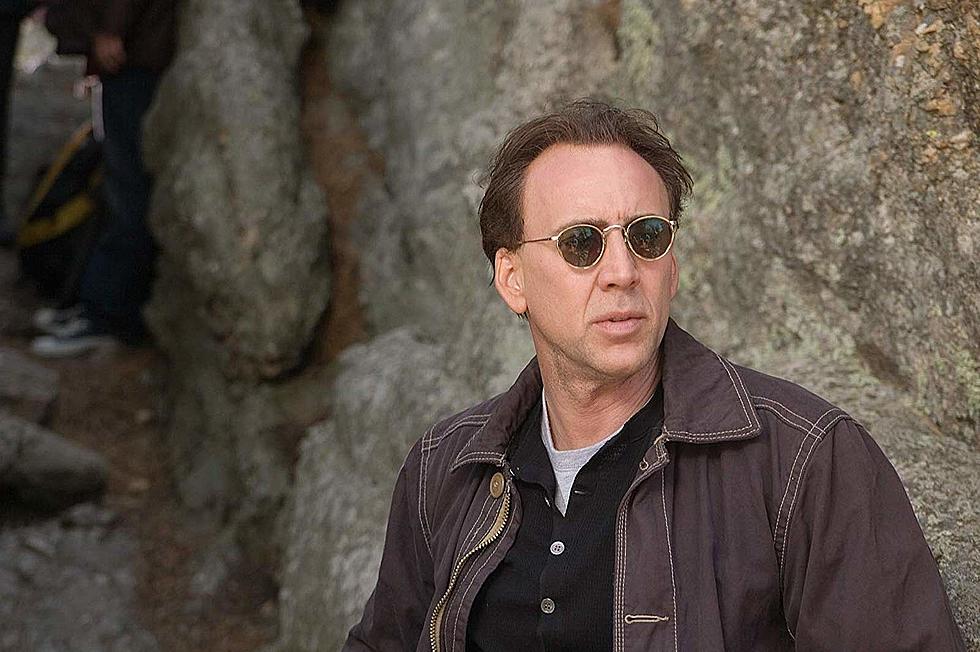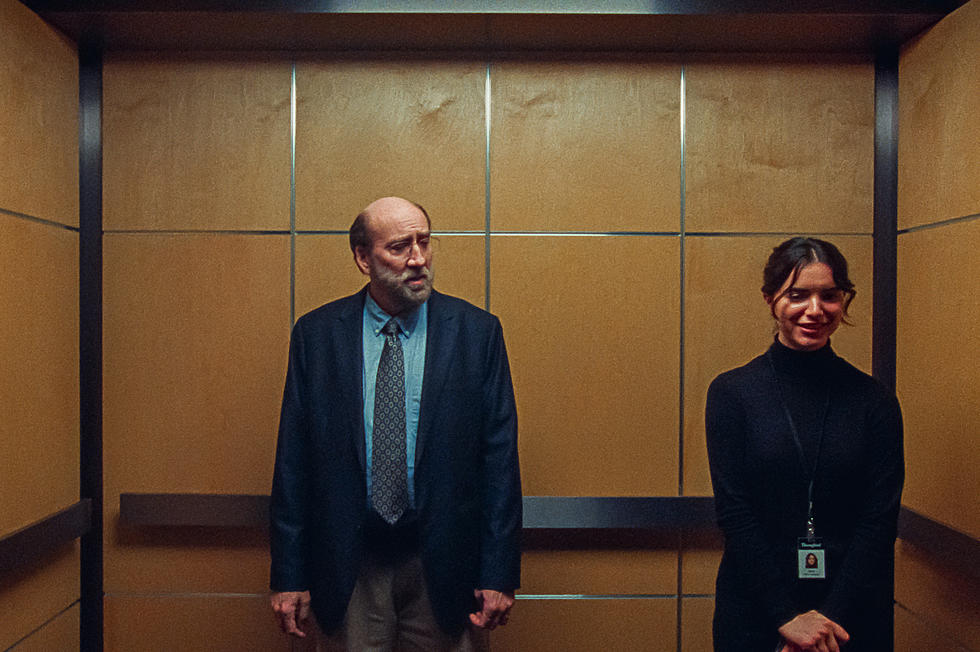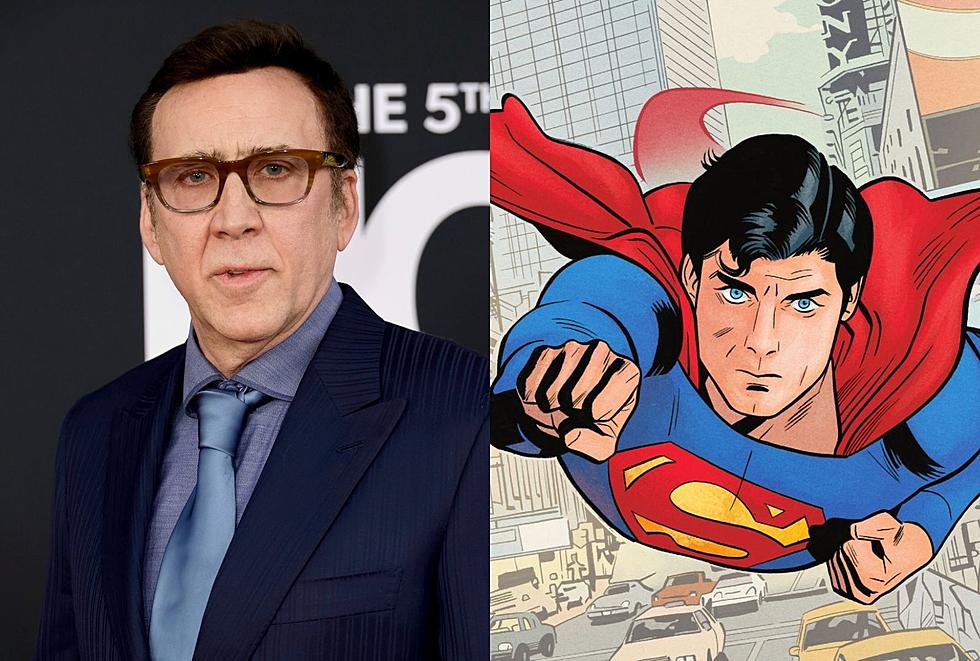
At 10 Years Old, ‘Ghost Rider’ Is a Portal to a Stranger Sort of Marvel Universe
The Marvel Cinematic Universe had its Big Bang in 2008, with Robert Downey Jr.’s debut as the incorrigible Tony Stark in Iron Man. In casting a charismatic leading man, feeding him some genuinely fresh one-liners, and stitching them together with a few impressive action scenes, director Jon Favreau and co-producer and nascent MCU mastermind Kevin Feige had struck gold. Marvel then went to work methodically stripping the mine clean, roping Chrises Evans and Hemsworth into multi-film contracts and watching as the billions rolled in. The company devised a winning formula of easy screen-idol mass appeal and an eminently palatable house visual style to go along with it, a method still yielding massive success to this day. (Guardians of the Galaxy 2, Thor 3, and Spider-Man Who Even Knows What Number, coming to theaters in 2017!) And it all began with RDJr. as an irresistible new breed of defender, the sort of guy you either want to be or be with.
Just one year earlier, Hollywood’s concept of a Marvel blockbuster was Nicolas Cage as a flaming CGI skeleton clad in S&M biker gear.
Today marks one decade since Hollywood’s most unpredictable live-wire first took up the mantle of Satan’s bad-to-the-bone emissary with Ghost Rider, and already the film feels as if it comes from a forgotten era. Upon its original release in 2007, it was derided as an incompetent, murky dud, and pretty much rightly so. But while the last ten years haven’t improved the film’s critical standing, they’ve turned it into a curious and illuminating time capsule of Marvel movies’ humble past. Everything about this film feels smaller than the Avengers-adjacent projects that would follow it, from its overall stakes right down to the literal area occupied by the climactic confrontation. Even as they left the pavement behind him scorched, Ghost Rider and its 2012 sequel Spirit of Vengeance knew how to stay in their lane, and most fortuitously, that left plenty of room for this mini-franchise to take some weird backroads.
The greatest asset of the Ghost Rider films was always their star, the inimitable Cage. I believe it was the great philosopher Forrest Gump who once compared a Nicolas Cage performance to a box of chocolates, explaining that you never just what strain of batsoid lunacy you’re gonna get. It was nothing short of divine coincidence that Undermedicated Manic Cage was the one to show up to set for Ghost Rider, his twitchy wild-card energy a welcome match to daredevil Johnny Blaze. Cage behaves like he knows when the film’s settling into one of its many lulls of tedium, and he compensates by acting even harder. He’s a consistently amusing sideshow, but the main event has its own odd charms as well.
Following a computerized credit sequence doing for two-lane blacktop what the X-Men credits did for strands of DNA, the opening minutes follow a Spider-Manish schematic. Brash young stunt rider Johnny Blaze sells his soul for a chance to save his cancerous dad, and though his tumors clear right up, he dies the next day in a tragic motorcycle accident. Li’l Johnny’s heartbroken, and the pain of his lady-love skipping town at the same time sends him into a nihilistic spiral. He shuts out the world, and all along, the nefarious Mephistopheles (Peter Fonda) waits in the background to collect his due.
(Fonda‘s casting, by the way, ranks as one of the stranger aspects of the film. He was enlisted not so much to play the role of Mephistopheles, but rather to play the role of ‘Peter Fonda playing the role of Mephistopheles.’ The Easy Rider icon’s presence in a film about motorcycling qualifies as an in-joke all its own, and the fact that the script introduces him with a chilly whisper of “far out” reinforces this inexplicable nod to in-the-know viewers of the older set. Equally bizarre is a cameo appearance from a pre-fame Rebel Wilson as a woman getting robbed in an alley, barely recognizable with raven hair and an American accent.)
Smash cut to the present day, where the now Cage-aged Johnny tempts death weekly with increasingly hazardous stunts, his grandest endeavor being a jump over five helicopters parked across a football field. It’s the great frustration of Ghost Rider that the film then shunts a colorful and atypical character into a brutally familiar superhero setup. He gains a snoozeworthy love interest when his boyhood paramour re-enters his life as a trenchant news reporter (Eva Mendes, inexplicably treated like a plain Jane by every man in the film) and finds a primary antagonist not in Mephistopheles but his son, the pallid-skinned demon Blackheart (Wes Bentley, suggesting a Satan who is also a Panic at the Disco fan). Ghost Rider could have made for a complicated sort of protagonist, considering his split loyalties and absolute black-and-white code of moral judgement. But the film insisted on treating the guy who looks like Hellraiser meets the Hell’s Angels with the utmost straight-facedness.
And yet, almost in spite of himself, director Mark Steven Johnson created some idiosyncratic minor wonders that gave the film more character than many of today’s ready-made moneymakers. There’s Sam Elliott in what may be the Sam Elliottest role of his career, portraying an molasses-voiced Texan gravedigger named Carter Slade, the Ghost Rider of a past life. (A brief sequence in which the two demons ride side-by-side with Slade top a fiery skeletal mustang is, objectively speaking, rad as hell.) The visualizations of Ghost Rider’s soul-shredding Penance Stare have a nightmarish sort of Expressionism to them, as hazy memories of sin bleed into one another. And then there’s the incidental entertainment factor; we don’t know if Johnson was aware of the roiling homoerotic undertones between Johnny Blaze and Blackheart, but they’re there all the same. Ghost Rider isn’t “good” by any stretch of the imagination, but because it was unencumbered by the responsibility of fitting itself into an interconnected plotline or juggling characters from other films, it had the latitude to be bad with a little more pizzazz.
Five years and one day later, Ghost Rider: Spirit of Vengeance drove this commitment to a more outré vibe to its most extreme conclusion. The original Ghost Rider occasionally touched on hamminess but failed to steady out and find an agreeable tone; its sequel abruptly veers into tangents of outright insanity. The directorial team of Mark Neveldine and Brian Taylor brought the same frenetic energy that electrified their Crank films to the Marvel brand, and the result played like a Ghost Rider hopped up on trucker meth. The humor plays bluer, with a triumphantly returning Cage mentioning a death-defying stunt he nailed bare-assed among his exposition. The jagged, erratic style that Neveldine and Taylor have made their trademark charges the entire film with an adrenaline rush befitting the subject material.
And the action sequences are truly a thing to behold: In one celebrated scene, Blaze takes command of a gargantuan mining machine known as the Bagger 288 and converts it into a titanic hellfire-belching chainsaw. The film‘s crowning achievement comes a few scenes later, when some poor thug tries to machine gun a Rider’d-out Blaze. He eats the bullets as they‘re shot at him, and then fires them right back in the form of lava by screaming. It’s the sort of moment that brings midnight-movie crowds to their feet for a standing ovation.
The Ghost Riders came from the wilds of Sony’s Columbia branch, which just may be the key to what makes them so uniquely fascinating. The films were freed up to take risks (many of which didn’t work, but some of which very much did) because they weren’t tasked with fitting into the larger architecture of Marvel’s intertextual universe, or meeting Warner Bros.’ every-release-a-tentpole mandate with their DC movies. Nicolas Cage, for one, could never fit into the modern mythos of the MCU, and he’s all the better for it. Seeing him shooting the bull with Iron Man or Captain America would make no sense; they might as well occupy different planes of existence.
Cage, the rare actor to harbor a comic-book obsession prior to joining up with a franchise, understood that over-the-top bombast is often what draws inquiring minds to comics in the first place, and generously obliged his audience. That same ethic extends to the Ghost Rider films themselves. In their jagged, stylized action sequences, adorned with ‘Hot Topic by way of Faustus’ chains and fire, they conduct themselves more like actual comic books than any $200 million studio project ever could.
These films don’t have the cathartic thrills of Raimi’s Spider-Man pictures, or the crowd-pleasing magnetism of The Avengers. But Ghost Rider suggested that appealing to more specific tastes could be fun (if not as lucrative), and Spirit of Vengeance loudly proved the thesis. The Ghost Rider movies have their detractors, but they also offer a wild-eyed alternative to the edgeless MCU canon. Those who can gibe with Spirit of Vengeance tend to adore it. Films that dare to be distinctive court a small fanbase, but a cult audience would go to hell and back for a movie it loves.
More From ScreenCrush









